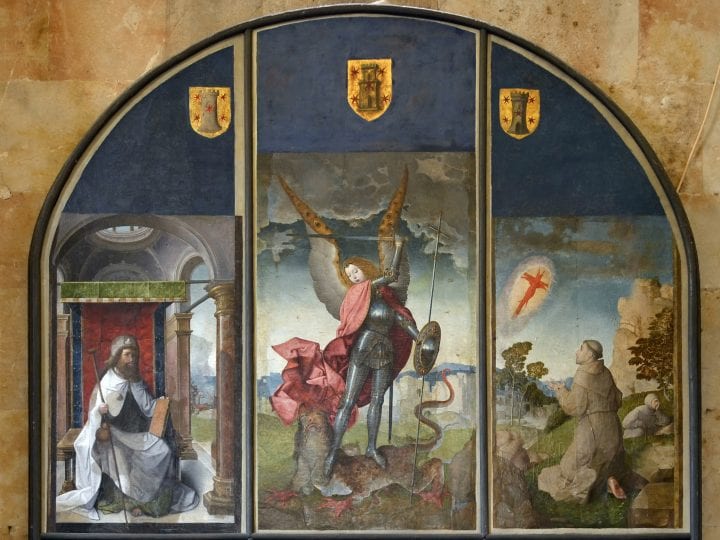During the late fifteenth century, the Netherlandish painter Juan de Flandes traveled to the court of Isabel, queen of Castile and León. He remained in her service until her death and subsequently secured multiple commissions for contributions to large-scale altarpiece projects. The financial documents associated with his career and his works reveal a high level of economic success in comparison to other artists active in Castile, including his fellow court painter Michel Sittow. This investigation into the fiscal opportunities available to a Netherlandish émigré demonstrates the economic power of locally produced Flemish art in sixteenth-century Iberia.
The Netherlandish painter Juan de Flandes (active 1496–1519) had a lucrative career on the Iberian Peninsula, and his professional history serves as an important case study on the economic motivations for immigrant artists.1 He first appears in 1496 in the court documents of Isabel, queen of Castile and León (1451–1504), and he used his northern European artistic training to satisfy the queen’s demand for Netherlandish-style panel paintings. He was elevated to the position of pintor de corte (court painter) and maintained this rank until the queen’s death. His production during these years included royal portraits (fig. 1) and small devotional paintings, such as the panels associated with the Retablo de Isabel (fig. 2).2 As court painter, Juan de Flandes traversed the Iberian Peninsula from Burgos in the north to Seville in the south, migrating between site-specific patronage projects, the current installation of the queen’s court, and other royal holdings.3 Although there is no surviving documentation that indicates Juan de Flandes accepted outside commissions during his service to the crown, these travels would have enabled contact between the painter and a wide variety of prominent courtiers and local artists. After Isabel’s death, Juan appears to have utilized this network of courtly connections to successfully compete for high profile commissions. By cultivating a desire for his paintings among supporters of the crown, Juan was able to capitalize on his previous association with the monarchy. This marketing strategy allowed the Flemish painter to further advance his career and economic potential.
Juan de Flandes’s financial transactions appear in numerous royal account books, ecclesiastical records, and altarpiece contracts. An additional glimpse into the market value of his paintings is provided by the assessment of monetary value for some of his works within the royal inventories. Cumulatively, these documents create a relatively complete and at times surprisingly nuanced view of his financial success during his career in Spain. The economic analysis of this Netherlandish painter reveals his successful marketability among the Spanish elite, as well as the exceptionally high esteem Juan held among his patrons.
Juan de Flandes, Pintor de Corte
Juan de Flandes’s economic prosperity began his first year in Castile. The cuentas (royal account books) record the payment of 6,000 maravedíes (abbreviated hereafter as mrs.) to Juan de Flandes on July 12, 1496, from the royal treasurer Gonzalo de Baeza.4 This sum may have been intended to cover his initial travel expenses.5 Only three months later, Isabel authorized the payment of 20,000 mrs. as a recurring annual salary, securing the services of Juan de Flandes for the future year.6 On arriving in Castile, he joined a vibrant and extensive royal entourage, where he worked alongside both foreign-born and native artists, including Michel Sittow (1469–1525), Francisco Chacón (active 1480–ca. 1501), Antonio Inglés (documented at the Castilian court between 1489 and 1490), and Pedro Berruguete (ca. 1450–1504).7
In December an additional sum of 15,000 mrs. was disbursed for outfitting the Flemish painter with proper clothing as a marker of his official status.8 Moreover, Isabel directed Juan de Flandes to create an altarpiece dedicated to John the Baptist (fig. 3) as part of the extensive redecoration of the Carthusian Chapterhouse at Miraflores outside of Burgos.9 In its original configuration, the Retablo de San Juan Bautista was composed of five narrative scenes from the life of the saint and would have been installed in a small space on axis with the main liturgical space.10 The production costs for this altarpiece were shared between the crown and the institution. The monastic account books record the housing and feeding of the painter at the cost of 26,735 mrs.11 When the three royal disbursements are considered alongside the monastic expenditures, Juan de Flandes received various forms of compensation valued over 67,000 mrs. during his first six months of employment in Castile (table 1).
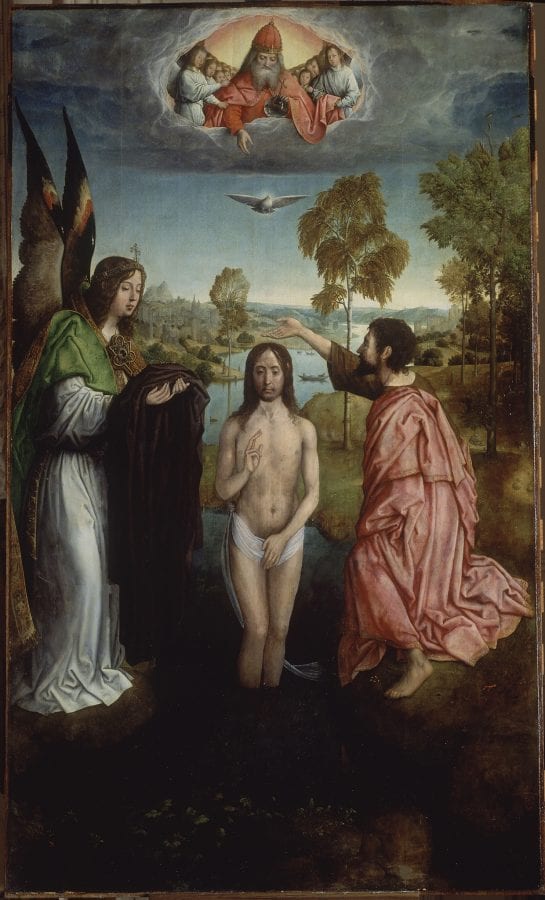
The fortunes of Juan de Flandes continued to increase when in 1498 he received the official title of pintor de corte.12 The change in status coincided with an increase of his annual allotment to 30,000 mrs., though it was not put into effect until the following year.13 Juan also received a payment of 26,735 mrs. for the Retablo de San Juan Bautista in 1499, signaling the successful completion of this project.14 Ostensibly due to the success of his paintings, Juan de Flandes began to receive additional monies beyond his regular salary. Although only one payment of 10,000 mrs. appears within the royal account books between 1497 and 1498, this payment is designated as for “certain works completed for Her Highness [Queen Isabel]” and it is probable that it was in excess of his annual salary.15 A similar payment of 15,000 mrs. occurred on April 6, 1500, as well as 4,000 mrs. in 1501 and 6,000 mrs. in 1502.16
As the total documented amount received by Juan de Flandes is calculated at over 350,000 mrs. for more than eight years of consistent employment, it is clear that his time spent at Isabel’s court was extremely lucrative (table 1).17 It should be noted that the artist received additional compensation in the form of living expenses and provisions for the costly materials necessary for the creation of his paintings. As a member of the royal entourage, Juan would have received food and lodging when he traveled alongside his patron. That Isabel secured accommodation for her household members even when they were absent from her court is suggested by the records of the monastery at Miraflores, in which the monies paid to Juan de Flandes are marked as being supplemented by room, board, and the provision of fine pigments intended for the altarpiece.18 Occasionally, payment was made in kind, as when Antonio Inglés was given eight lengths of fine Holland cloth as payment for portraits made of the royal children.19
The annual salary of 20,000, and then 30,000 mrs., allotted to Juan de Flandes has often been interpreted as indicating a subservient position to (and lesser esteem than) his fellow court painter Michel Sittow, who had been given a pension of 50,000 mrs. in 1492.20 Joaquín Yarza Luaces even uses the difference in salary, and the coinciding assumption of quality, to question the attribution of the Retablo de San Juan Bautista to Juan de Flandes, stating the “exceptional piece seems difficult to attribute to Juan de Flandes, being closer to Michel Sittow, the great master who arrived in Castile before Juan de Flandes and received a higher fixed annual salary, greater than that of the other.”21 Jeltje Dijkstra uses a similar logic to argue that the copy of Rogier van der Weyden’s Miraflores Altarpiece, split between the Capilla Real of Granada and the Metropolitan Museum of New York, must have been created by Sittow.22 Greta Koppel has recently repeated this idea, stating “As Sittow was then working at the court and, based on his high salary, was presumably the queen’s preferred artist, he has been considered the probable author of the copy of such a prestigious work.”23
However, what is often missing from this assessment based on remuneration is the fact that the crown had immense difficulties making good on its commitment to Sittow.24 While registering a payment of 10,000 mrs. to Sittow in 1495, the royal official included a notation that an amount remained owed due to the shortage of available funds.25 By September of the following year, 214,000 mrs. were needed to discharge the debt.26 Moreover, Sittow neither received an increase to his annual allotment nor regularly received compensation beyond his salary. Only one such payment is known, for 5,000 mrs. in 1499, designated for the purchasing of new clothing.27 Sittow’s compensation remained relatively static over the course of his Castilian career, with the additional monies disbursed in 1498, 1499, and 1500 due to underpayment in preceding years (table 1).
In contrast, Juan de Flandes received a 50 percent raise to his salary after only two years of employment. Moreover, the queen immediately sent Juan to create the Retablo de San Juan Bautista as part of the refurbishment of the Carthusian Chapterhouse of Miraflores, with the production costs shared between the monastery and the crown, resulting in additional income for Juan. Nor was this the only time Juan received monies beyond his salary; he appears to have received additional payments in at least three additional years. The supplementary funds are especially interesting when considered alongside the financial difficulties experienced by the monarchy during these years. The crown had difficulty accessing funds, as evidenced by the difficulty in paying the salary promised to Sittow.28 The crown’s fiscal realities may have also contributed to the change in the payment structure of Juan de Flandes’s salary away from 30,000 mrs. recompensed in one lump sum, as occurred in 1500.29 In the years 1501, 1503, and 1504, Juan’s annual salary was divided into payments of 10,000 mrs. and 20,000 mrs.30 In 1502, the 30,000 mrs. appears to have been divided into three equal parts, with the final third not paid until the following year.31
An aggregate view of Juan’s financial compensation further complicates the traditional comparison of this artist with Michael Sittow. Cumulatively, the total documented amount paid to Juan de Flandes during his time at court comes to just over 350,000 mrs. for eight years of employment (see table 1). Although Sittow was employed at the Castilian court for a slightly longer period of time and received a significantly larger annual salary than Juan de Flandes, the total monies disbursed to Sittow only exceeded those to Juan by approximately 7 percent, a much lower difference than the initial 30,000 mrs. to 50,000 mrs. comparison suggests. Therefore, it is difficult to presume that Michael Sittow’s larger annual pension indicates by default that he was held in far greater esteem by the queen or that he produced works of a higher quality.32 Instead, the painters appear to have been placed on a relatively equal financial footing with one another. This new interpretation is supported by their collaboration on artistic projects, such as the Retablo de Isabel, and by the appearance of payments in the royal account books naming both artists as having received monies from the same treasurer on the same day, suggesting that the two painters traveled and worked alongside each other.33 The amounts paid to both painters far exceeded the 10,112 mrs. paid to Antonio Inglés, though it should be noted that he was not employed as a pintor de corte and maintained his primary affiliation with the English monarchy while in Castile.34 The sums paid to Juan de Flandes were especially high when compared to the wages earned by other Castilian workers.35
The Financial Evaluation of Works Produced for Isabel
Juan de Flandes’s marketability is further indicated by the high monetary value his paintings garnered after Isabel’s death. In preparation for the liquidation of the queen’s estate, a general appraisal was made of her luxury goods. The values of 106 paintings from Isabel’s personal painting collection were recorded, amounting to 464,295.5 mrs. (table 2).36 The estimate included the forty-seven panels of the Retablo de Isabel, forty-three panels of which were sold to three separate purchasers.37 The successful dispersal of the Retablo de Isabel contrasts with the greater liquidation efforts; approximately only a third of Isabel’s paintings were successfully sold.38 The perceived quality of the Retablo de Isabel panels is also suggested by their high value when compared to the estimated values of items in the general collection.39 The individual panels from the project ranged from 937.5 mrs. to 2,250 mrs. (table 3), markedly higher than the collection’s median value of 375 mrs..40 With a collective value of 76,875 mrs., the forty-three panels of the Retablo de Isabel constituted 16.5 percent of the total value of the queen’s painting collection. When considered collectively, the Retablo de Isabel was one of the highest valued painted projects, second only to a triptych of the Passion by Dirk Bouts (1415–1475), valued at 282,860 mrs. (table 4).41 Moreover, a comparison between the monies collected from the sale of the Retablo de Isabel and the funds disbursed to Juan de Flandes during his career as court painter reveals that if all of the paintings had been sold at their original estimated value the crown would have been able to recoup nearly a quarter of the funds originally disbursed to Juan de Flandes and offset approximately two years of average salary.42 This suggests that even though Juan de Flandes was paid a substantial amount, the value of the works produced would have had the potential to offset a considerable portion of the costs if they were liquidated. Not only were his works held in high esteem by the crown, their desirability appears to have extended to the upper nobility, who provided a ready market for the Retablo de Isabel.
Juan de Flandes and the Altarpiece Market
Juan de Flandes was able to capitalize on the demand for locally produced works in the Hispano-Flemish style after Isabel’s death, when he began successfully to compete for lucrative project-specific commissions in northern Castile. On August 29, 1505, he submitted a sample panel painting for consideration in the refurbishment of the Capilla de San Jerónimo, the main chapel of the University of Salamanca.43 Three days later, the governing body of the university contracted Juan to produce images for the retablo mayor of the chapel (fig. 4).44 This project was a collaborative effort between several artists. The altarpiece had been initiated sometime before 1503 as a sculptural retablo; later the university began investigating the potential of integrating paintings into the project.45 Juan de Flandes’s contract, dated September 2, 1505, stipulates the creation of eight narrative scenes from the life of Saint Jerome in addition to six painted standing figures, with the particular imagery to be specified at a future time.46 For these fourteen paintings Juan would receive 85,000 mrs. of compensation. The payments were to be divided into an initial disbursement of 20,000 mrs. at the signing of the contract with the remainder paid upon completion of the panels. Juan de Flandes was also to be given a “fine room” for the duration of his employment with the university.

The contract stated that the work was to be completed in one year to the “contentment of the University and the teachers” under threat of forfeit of any outstanding payment as well as the return of any monies or supplies already dispersed.47 In contrast with the stated terms of the contract, Juan received a series of payments as he progressed. For example, on February 1, 1507, a payment of 10,000 mrs. was dispersed to the artist, which was followed by 20,000 mrs. on June 28 of the same year.48 The university leaders must have been satisfied with the general progress of the project as they commissioned a banco (predella) (fig. 5) from Juan de Flandes for an additional 15,000 mrs. a few weeks later.49 Although the banco was completed within months, Juan did not finish the narrative and figural images until July 4, 1508, almost two years past the time dictated in the original contract.50 Because of the amount of time and materials invested in the project as well as improvements made to the original compositions, Juan de Flandes petitioned for an increase in his final payment.51 The Claustro de la Universidad debated the merits of the work, and within a week the Vicerector and Vicescholástico of the university decided to award an additional 15,000 mrs. to the Flemish painter.52 This final payment brings the total monies paid to Juan de Flandes to 115,000 mrs. for his portion of the retablo mayor project.
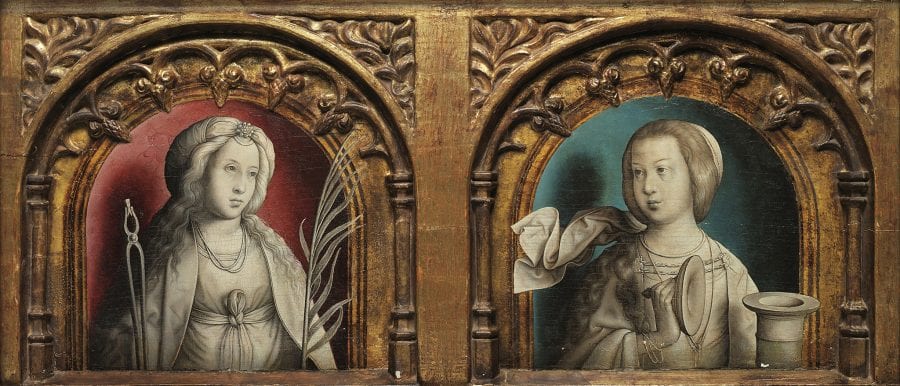
The documentation surrounding the University of Salamanca altarpiece includes neither direct statements regarding Juan de Flandes’s artistic reputation nor a critical assessment of his works. However, the actions of the governing body overseeing the refurbishment of Capilla de San Jerónimo suggest that Juan was able both to impress his patrons and to convince them of the high value of his work.53 The drawing up of a second contract before the successful completion of the first indicates a warm reception for the painter’s progress. The decision by leading members of the governing body to augment the compensation for the narrative and figural images by just over 17 percent indicates Juan’s ability successfully convince them of the additional value of the work due to his long hours of skillful labor. The Claustro de la Universidad further revealed their high regard for Juan de Flandes and their satisfaction with his product by attempting to commission a second altarpiece for the newly constructed Hospital de la Universidad from the “excellent painter” after the completion of the altarpiece for the university chapel.54 The context for this discussion, which occurred shortly after the decision to raise Juan’s compensation, indicates their increasing desire for his works. While Juan de Flandes did not accept the commission, he participated in the project as an expert to assess the quality of the final work in advance of payment.55 The success of the university altarpiece also resulted in the private commission of the Retablo de San Miguel (fig. 6), a funerary monument for the Salamanca law professor Francisco Rodriguez de San Isidro.56
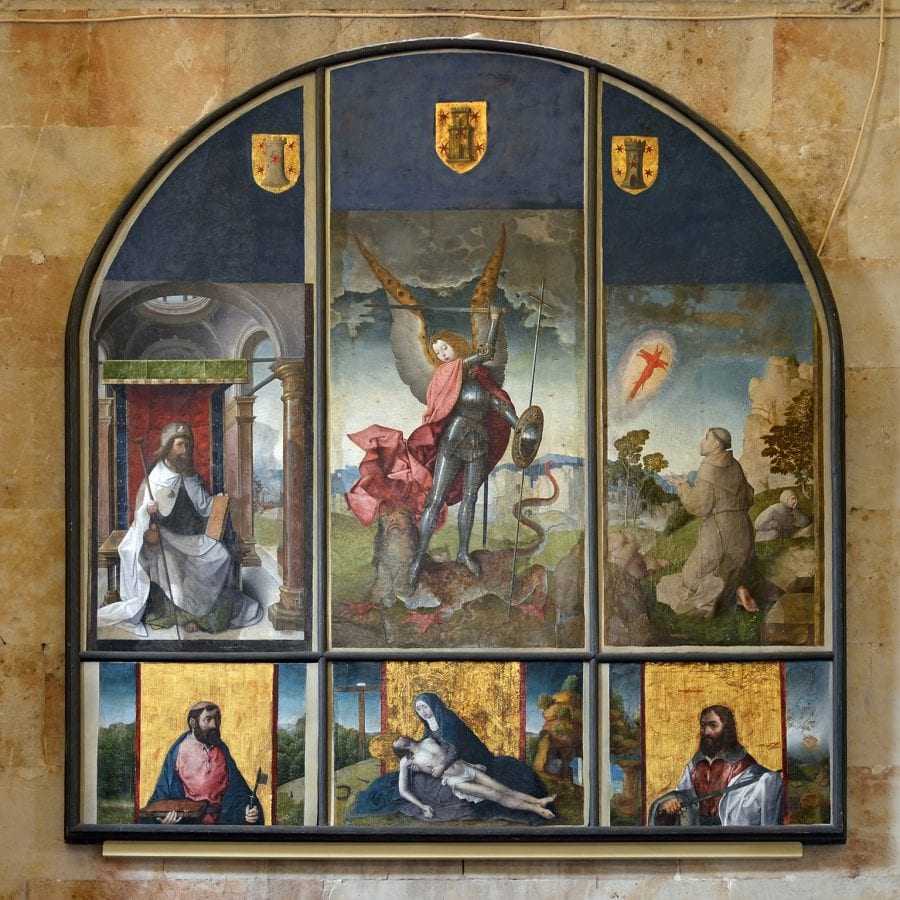
Like the retablo mayor for the university of Salamanca, the second major commission granted to Juan de Flandes after Isabel’s death was also for paintings to accompany an already existing sculpted altarpiece. When Juan Rodriguez de Fonseca (1451–1524) was named bishop of Palencia in 1509, the cathedral was in a state of expansion and refurbishment.57 Fonseca decided to reconfigure a recently completed but not yet installed sculpted retablo intended for the Capilla del Sagrario as a retablo mayor for the high altar in the newly renovated choir (fig. 7).58 The sculpted altarpiece would have consisted of a series of saints standing in niches separated by pilasters.59 The contract with Juan de Flandes describes how, in order to augment the overall scale of the project, the bishop commissioned additional painted images.60 The contract specifies the Christological subject matter and relative size of the paintings, suggesting that the integration of the painted components into the structure had already been established.61 The paintings were to be of high quality by Juan’s own hand.62 Interestingly, the document suggests that Bishop Fonseca anticipated the regional stylistic differences between the sculpted and painted elements. The description of the original sculpted retablo as “de talla Romano” mimics the language used in the original commission contract from 1504, which stated that the sculptures were to be done in the “style and manner of the ancients and the Romans.”63 As a member of the royal entourage living in Flanders from 1499 until 1505, Fonseca would have been well aware of the differences between northern and southern European regional styles.64 The high regard the bishop held for Juan de Flandes and his Flemish painting style is suggested by the incredibly high price of 187,000 mrs. to be paid for the panels over a period of three years.65 The Palencia altarpiece project continued to evolve after Juan completed the paintings—even after the installation in 1527.66
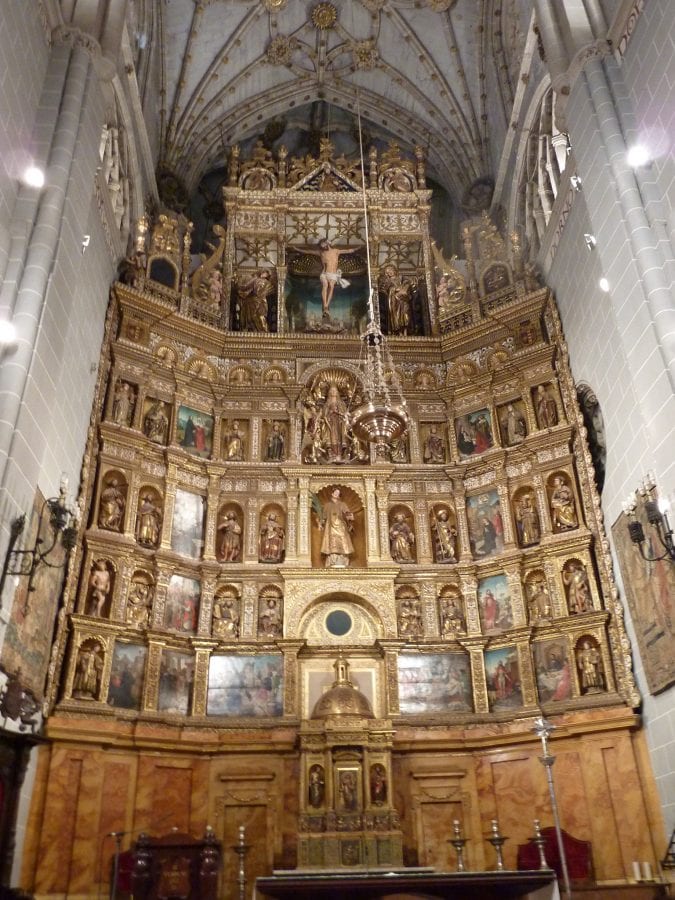
Castilian retablos were site-specific and highly customized ensembles, complicating any attempt to compare the amounts paid to Juan de Flandes with contemporary altarpieces in order to ascertain his position on the Castilian pay-scale.67 In addition to the prestige value of a specific painter, the fluctuations in the value of currency, the scale of the retablo, its intended location in the church, the elaborateness of the frame, and the use of expensive materials such as gold, ultimately influenced the final price.68 However by comparing the contracts for eight retablos constructed in Castile in the final decades of Isabel’s reign, it is possible to loosely establish the range of prices charged by painters contemporary to Juan de Flandes (table 5). As one might expect, smaller projects such as the chapel retablo for the parish church in Cedala were significantly lower in cost than retablo mayors for important cathedrals, exemplified by the high altarpiece of Toledo.69 These smaller projects were also more likely to be completely overseen by the painter, who would be responsible for all the costs of production, impacting the profit margin on the project.70 The contract for the retablo in the Luna family chapel in the Toledo cathedral (fig. 8), for example, includes a detailed discussion of the elaborately carved gilt frame, the acquisition of which was presumably the responsibility of Sancho de Zamora and Juan de Segovia.71 Larger projects with multiple contracts involving several different independent artists, as is the case for the retablo mayor of the Toledo cathedral (fig. 9), provide a view into the relative costs of the paintings and sculptures.72 That the sculptor Peti Juan (documented 1497–1504) was paid a higher amount than the painter Juan de Borgoña (1470–1534) for their work in the cathedral provides economic support for the traditional interpretation of sculpture as more expensive and therefore more prestigious than painting.73 In contrast with the case of the retablo mayor of the Toledo cathedral, Juan de Flandes was the highest paid artist involved in both the retablo for the Capilla de San Jerónimo and the retablo mayor of Palencia cathedral. In fact, the paintings by Juan de Flandes significantly increased the overall costs for these altarpieces.
Understanding Juan de Flandes’s Financial Success
The high prices paid to Juan de Flandes while he was active on the Castilian market reflected the strong desire felt by patrons to secure his services and corresponded to a general craving for Flemish art. The market in which Juan de Flandes’s training and working practices were in such high demand resulted from the preferences of Isabel of Castile for a northern European style.74 Isabel modeled the magnificence of her court on the material luxury and splendor of the dukes of Burgundy, including the use of Netherlandish art.75 Isabel’s marked preference for northern European luxury goods, including tapestries and paintings, communicated both an international sophistication and a localized, specifically Castilian, identity. The dominance of the taste for Flemish art at Isabel court is indicated by the career of Pedro Berruguete, who even after working in the Italian city of Urbino continued to utilize Hispano-Flemish forms upon his return to Castile, ostensibly in response to the desires of his patrons.76 The queen was willing to pay Juan de Flandes and Michel Sittow incredibly large amounts because of her desire for locally produced Flemish paintings that could be tailored to coincide with her specific political and devotional needs.77
After Isabel’s death, Juan de Flandres continued to utilize a social network of artists and patrons to obtain lucrative commissions across Castile.78 The close connection between the queen and her taste for Flemish art helps explain why the Castilian elite continued to commission artworks from Juan, despite their high price. The ability to work with oil glazes, a technique not well understood by Iberian painters, certainly affected the final price paid for Juan de Flandes’s works in Salamanca and Palencia.79 However, neither the cost and quality of materials nor the continued desire for Flemish luxury goods adequately explains the exceedingly high level of financial success achieved by the artist later in his career. The tensions between the nobility and the crown, heightened during the short reign of Philip the Fair and the regency of Charles V (1550–58), augmented the need for those loyal to Isabel’s legacy to communicate their allegiance.80 As a former court painter, Juan de Flandes provided a vehicle for courtiers to demonstrate their continued loyalty to and association with the monarchy. The acquisition of artworks once owned by the queen, for example by purchasing panels from the Retablo de Isabel at the sale of the queen’s estate, or the commissioning of altarpiece components from the former court artist perpetuated a direct connection with the deceased queen.81 Juan de Flandes’s ability to capitalize on the aesthetic and political environment in post-Isabeline Castile allowed the Flemish painter a level of financial success unavailable to many of his Castilian contemporaries. Even as Spanish taste shifted toward the forms of the Italian Renaissance, the exorbitant prices paid to Juan de Flandes in the last decades of his career reveal the continued fervent desire for Flemish painting in the early sixteenth century.
| Table 1. Summation of payments made to painters as recorded in royal accounts | |||
|---|---|---|---|
| Year | Juan de Flandes | Michael Sittow | Antonio Inglés |
| 1489 | 7,300 mrs. | ||
| 1490 | 2,812 mrs. | ||
| 1494 | 50,000 mrs. | ||
| 1495 | 10,000 mrs. | ||
| 1496 | 67,633 mrs. | 118,834 mrs. | |
| 1497 | 10,000 mrs. | ||
| 1498 | 56,499 mrs. | ||
| 1499 | 86,735 mrs. | 55,000 mrs. | |
| 1500 | 75,000 mrs. | 66,666 mrs. | |
| 1501 | 24,000 mrs. | 20,000 mrs. | |
| 1502 | 36,000 mrs. | 10,000 mrs. | |
| 1503 | 30,000 mrs. | ||
| 1504 | 30,000 mrs. | ||
| TOTAL | 359,368 mrs. | 386,999 mrs. | 10,112 mrs. |
| Average per year of employment | 39,929 mrs. | 42,999 mrs. | 10,112 mrs. |
| Table 2. Distribution of prices assessed for paintings in the sale of Isabel’s estate | |
|---|---|
| Price Range | Number of Works |
| 1-1,000 mrs. | 41 |
| 1,000-1,500 mrs. | 31 |
| 1,501-2,000 mrs. | 18 |
| 2,001-5,000 mrs. | 13 |
| +5,000 mrs. | 2 |
| TOTAL VALUE | 464,295.5 mrs. |
| Table 3. Distribution of prices assessed for the panels of the Retablo de Isabel | |
|---|---|
| Value | Number of Panels |
| 937.5 mrs. | 1 |
| 1,125 mrs. | 5 |
| 1,312.5 mrs. | 3 |
| 1,500 mrs. | 17 |
| 1,687.5 mrs. | 2 |
| 1,875 mrs. | 14 |
| 2,250 mrs. | 5 |
| TOTAL VALUE | 76,875 mrs. |
| Table 4. Estimated value for paintings in Isabel’s estate, organized by artist | ||
|---|---|---|
| Artist | Number of Works | Total Value |
| Dirk Bouts | 1 | 282,860 mrs. |
| Juan de Flandes/Michel Sittow Retablo de Isabel | 47 | 76,875 mrs. |
| Diego Sanchez and Anton Sanchez de Guadalupe | 1 | 3,000 mrs. |
| Hieronymus Bosch | 2 | 1,375 mrs. |
| Anonymous Artists | 55 | 100,373 mrs. |
| TOTAL | 106 | 464,295.5 mrs. |
| Table 5. Prices paid for a selection of Castilian retablos in the late fifteenth century | ||||
|---|---|---|---|---|
| Artist | Title | Location | Price | Division of Monies |
| Sancho de Zamora (painter) | Chapel Retablo | Cedala | 12,000 mrs. | Total price paid to painter, all aspects of production overseen by painter |
| Bernaldino (painter) | Retablo of St. James | Zorita | 53,000 mrs. | Total price paid to painter, all aspects of production overseen by painter |
| A. Ledesma (painter) | Retablo San Nicolás | Palencia | 60,000 mrs. | Total price paid to painter, all aspects of production overseen by painter |
| Sancho de Zamora (painter) and Juan de Segovia (painter) | Retablo of the Luna Family | Toledo | 105,000 mrs. | Total price paid to painter, all aspects of production overseen by painter |
| Pedro Díaz de Oviedo | Retablo Mayor | Tudela | 270,000 mrs. | Total price paid to painter, all aspects of production overseen by painter |
| Juan de Flandes (painter), Felipe Bigarny (sculptor), Juan Ipres (guilder), and Anton de Lorena (carpenter) | University Chapel Retablo | Salamanca | 293,000 mrs. | Multiple contracts with 115,000 mrs. to Juan de Flandes, 38,00 mrs. to Felipe de Bigarny, 100,000 mrs. to Juan Ipres, and 40,000 mrs. to Anton de Lorena. |
| Juan de Flandes (painter), Juan Tejerina (painter), Pedro de Guadeloupe (sculptor), Felipe Bigarny (sculptor), Pedro Manso (carpenter) | Retablo Mayor | Palencia | 535,250 mrs. | Multiple contracts with 187,500 mrs. to Juan de Flandes, 3,750 mrs. to Juan Tejerina, 139,000 mrs. to Pedro de Guadeloupe, 130,000 mrs. to Felipe Bigarny, and 75,000 mrs. to Pedro Manso. |
| Juan de Borgoña (painter), and Peti Juan (sculptor) | Retablo Mayor | Toledo | 2,090,000 mrs. | Multiple contracts with 990,000 mrs. paid to Juan de Borgoña, and 1,100,000 mrs. to Peti Juan. |
